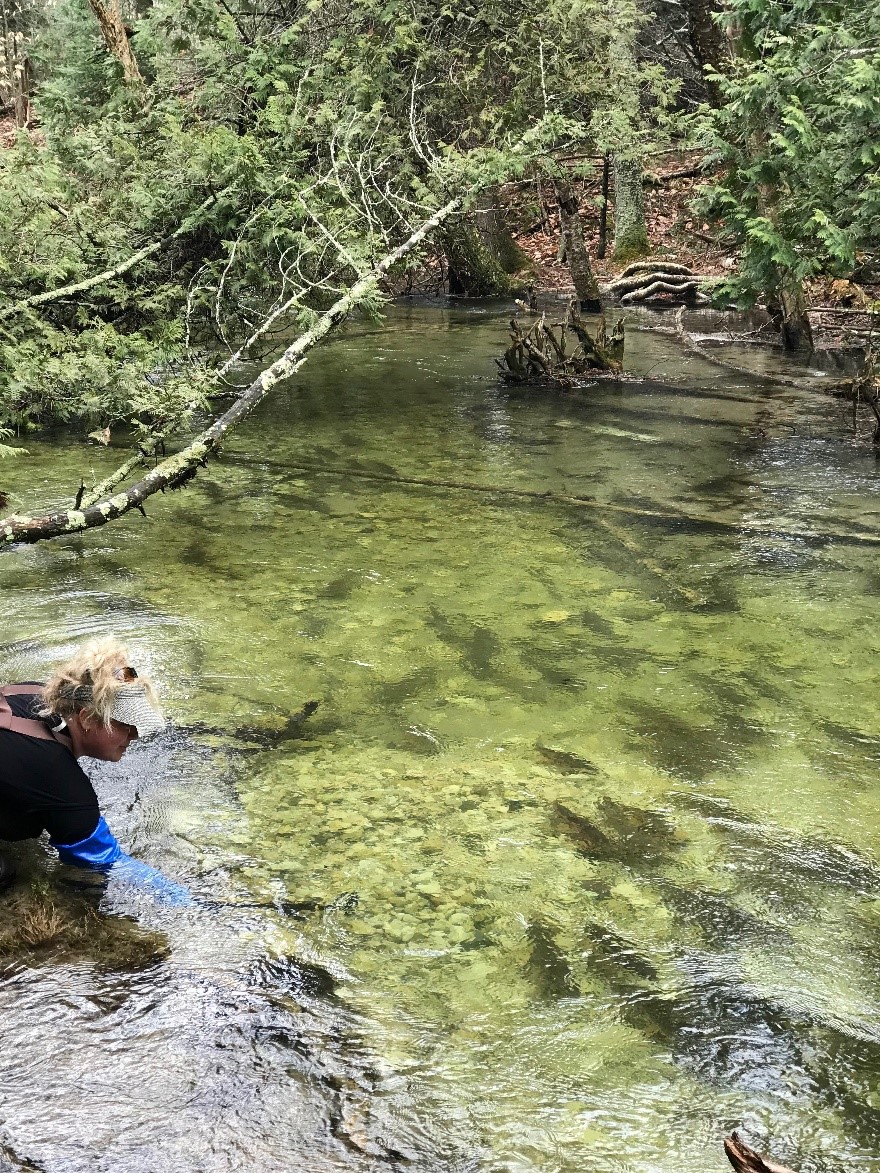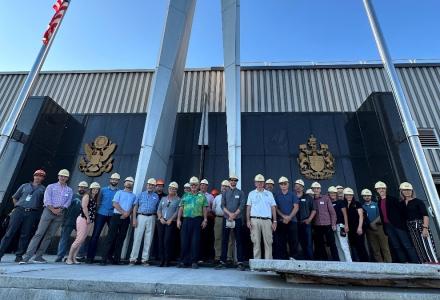
Every spring, rivers and streams connected to the Great Lakes fill up with suckers to lay their eggs. This group of fish species is known for eating their meals off the lake bottom. They’re not a popular game fish and may be regularly overlooked, but recent research shows they play an important role in the broader ecosystem.
The Great Lakes are home to several species of suckers. Two in particular are found in all five lakes in abundant numbers: the longnose sucker and white sucker. These species spend much of the year in the lakes, with longnose suckers preferring colder, deeper waters than white suckers, which tend to live in nearshore areas.
Both species are among the earliest kinds of fish to take to Great Lakes tributaries every spring to spawn. Much like salmon runs along the North American coasts, these fish bring with them nutrients in their eggs and excrement that nourish many species across and up the food web, from insects and small fish to creatures that eat juvenile and adult fish (including humans).
When suckers head into waterways during spawning runs, they leave behind eggs and waste that help kick-start ecosystems following the winter, said Karen Murchie, director of freshwater research at the Shedd Aquarium in Chicago. At these times, anywhere between hundreds to hundreds of thousands of suckers come up through tributaries linked to the Great Lakes.
Studies Show Impacts
How big an impact does this make? A big one, according to Murchie. A recent study blocked off a creek in Wisconsin after the sucker run had started to measure nutrients such as phosphorus, nitrates and ammonium. The researchers found that due to suckers dropping waste, milt (seminal fluid) and eggs, the levels of these nutrients increased in the water. These nutritional sources were being consumed by insect larvae, small fish and algae – vital food sources early in the year for many other species that serve as foundations of the aquatic food web.
Nicholas Jones, research scientist with the Ontario Ministry of Natural Resources and Forestry, said a study he worked on looked at sucker runs in the Cypress River off Lake Superior due to its sizable run and an impassable waterfall 4 kilometers (2.5 miles) upriver that allowed for a good comparison.
They found that a number of aquatic species were devouring the sucker eggs. Suckers don’t dig nests or carefully lay in cobble like other fish, such as salmon or sturgeon. The females instead broadcast their eggs out over ideal rocky substrate while males release milt to fertilize them. While some of these eggs will attach to rocks, others will continue to float around and get eaten by fish as small as minnows and sculpin.
“Sampled steelhead of all sizes were fat like they just had Christmas dinner. Others were so full they regurgitated handfuls of eggs when taken out of the water,” Jones said.
When comparing the downriver area to that above the waterfall (and taking into account other fish species in the water), algae was nine times more abundant, invertebrates were twice as dense and fish biomass was eight times greater compared to waters above the falls that the sucker runs don’t reach. Nitrogen and carbon was also much more abundant in fish below the falls where the suckers were able to spawn.
Another project is underway by Jones’ graduate student Michael McKenzie using molecules known as “carbon stable isotopes” to track the diets and level of nutrition for species like longnose dace and slimy sculpin that eat sucker eggs in areas where suckers spawn. The project will look at 37 tributaries within the Great Lakes that have waterfalls or other such barriers for comparison, and Jones said they hope to have results published within the next few years.
Collecting Data
Unlike salmon, suckers don’t die after spawning. Murchie has been collecting data over the past few years on whether tagged suckers return to the same spawning grounds. So far, she said, it appears that individual fish will return to the same waterways to spawn each spring. She initially tagged 100 fish in 2017, and about 50 of those returned in 2018. Last year, 204 out of 300 were recorded returning to the same locations.
“Locally and individually, one fish can mean quite a bit to one tributary,” Murchie said.

The timing of the run is incredibly important to the ecology in these waterways, and climate change could be affecting that. Murchie noted that the timing of growth of aquatic insect larvae and algae is intertwined with when suckers are supposed to begin moving into tributaries; if that timing breaks down it could have cascading effects through the ecosystem.
She added that historical records are being examined to see how the sucker run may have changed over the years. The Great Lakes Indian Fish and Wildlife Commission has been interviewing tribal experts for several years for its climate change program. A January 2017 interview with an anonymous Red Cliff Tribe member mentions how much the timing of sucker runs has changed.
“When they used to run, you could catch tons of them. Every creek had them. Could catch them by hand. As soon as the popple leaves were as big as a quarter, the suckers would be running (it was the sign for them, but that changed 15 years ago).”
The Shedd Aquarium has been running a crowdsourced project to collect information on when suckers begin their migration into tributaries across the Great Lakes. This effort is a collaboration with Cornell University’s Dr. Pete McIntyre, and Murchie said volunteers at sites in Illinois, Wisconsin and Michigan’s Upper Peninsula log information onto data sheets each day. That information is collected at the end of the spawning season.
Murchie wants to expand this project using the Great Lakes Fish Finder app found on both Apple and Android platforms. Users can photograph fish they spot and help get them properly identified, which provides data for researchers who can’t necessarily crisscross the entire Great Lakes during migration season, Murchie said. This project is open to Great Lakes area residents in Canada and the United States.
A better understanding of how suckers can feed and impact entire ecosystems is vital for both water resource managers and land developers, Murchie said, to ensure that rivers are unimpeded so that fish can still reach their preferred spawning grounds and keep themselves – and other species – alive.

Kevin Bunch is a writer-communications specialist at the IJC’s US Section office in Washington, D.C.




